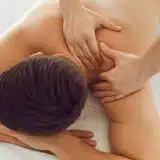The Magic of Indian Head Massage: 5 Incredible Advantages of Oils for Hair Growth and Wellness
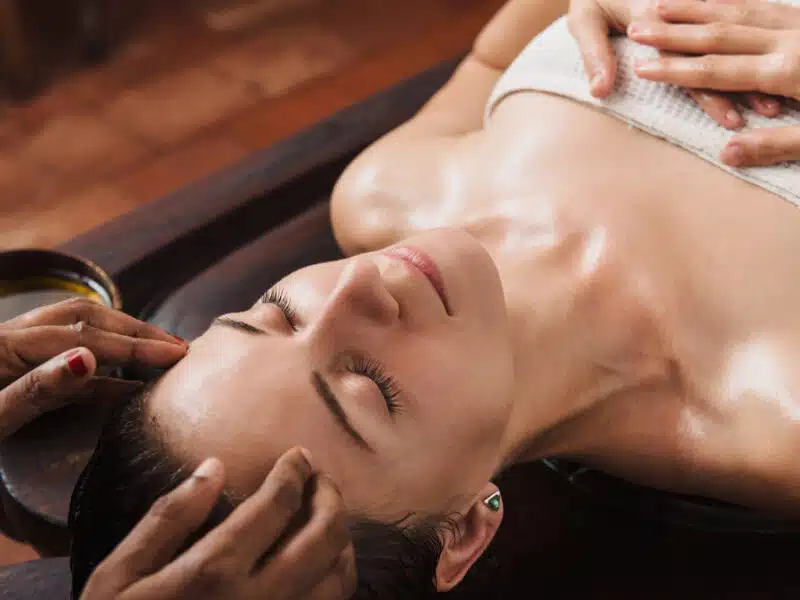
What is Massage 14th Jul, 2023
The power of the Indian head massage, more formally known as shiroabhyanga, is deeply rooted in the holistic understanding and synchronization of mind, body, and spirit. This intricate interplay forms the core of the philosophy behind this technique, establishing a symbiotic relationship that leads to an overall sense of well-being.
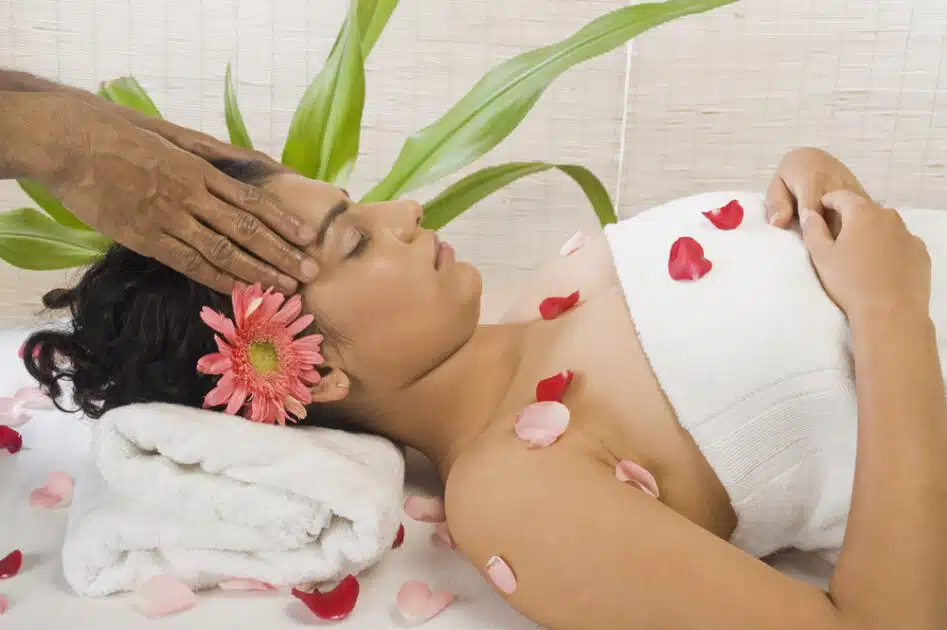
Shiroabhyanga hails from Ayurveda, a traditional Indian system of medicine, and has been practiced for centuries. Ayurveda is a Sanskrit term that translates to ‘life-knowledge’ and it encapsulates the ancient wisdom of prolonging life and eliminating diseases. Indian head massage, a vital component of Ayurveda, epitomizes the system’s core philosophy of preventing and treating illnesses by maintaining balance in the body.
The technique operates on the concept of the life force or energy, known as prana in Sanskrit. Prana is believed to be the vital energy that flows through our bodies, keeping us alive and healthy. However, over time and due to various factors such as stress, poor nutrition, and lack of exercise, this energy can become stagnant and blocked. Indian head massage, with its specialized techniques, aims to release this stagnant prana, stimulating energy flow and helping restore balance and harmony within the body.
Indian Head Massage and the Prana Principle
Shiroabhyanga, or Indian head massage, has its roots in the Prana principle, which is a cornerstone of Ayurvedic philosophy. The method focuses on locating and removing energy blockages, much like replacing a broken door handle. Let’s examine its main components in more detail:
Understanding Prana
Often compared to wind since it is invisible yet essential, Prana is the life-sustaining force within the body. Our health and well-being are fundamentally dependent on the flow of this energy.
Finding the Blockages
The therapist symbolically “unscrews” the blocked or stagnant Prana during an Indian head massage. They symbolically remove the barrier by applying pressure with the heel of their hand along the client’s shoulder girdle in a counterclockwise movement.
Addressing Energy Blockages
The technique of addressing energy blockages is a fundamental component of the therapeutic process. This process operates at multiple levels — not just the physical, but also the unseen energetic level of our existence. Prolonged periods of physical strain can lead to stiff, tense muscles, which can manifest as aches, pain, or discomfort. An adept therapist, trained in the art of Indian head massage, can identify these areas of physical tension and use specific massage techniques to release this strain.
Restoring Positive Energy
After the obstruction has been removed, the therapist’rescrews’ or injects renewed energy by spinning their hand in a clockwise motion. With this motion, the client’s body receives new Prana once more, bringing harmony and balance back.
Holistic Healing
Shiroabhyanga’s use of the Prana principle shows how it has the power to affect not only the physical body but also the alleged subtle energy field that surrounds us. Indian head massage functions at a fundamental level by releasing and rejuvenating the body’s energy flow, highlighting its major contribution to holistic health.
By aligning the mind, body, and spirit, the Prana principle remains a vital aspect of the Indian head massage philosophy. This form of therapy helps maintain the body’s energy flow, reinforcing its critical role in holistic health and well-being.
Recommended:
Aromatherapy Massage
Understanding the Role of Oils
Different oils have unique properties that work in concert with the massage techniques to offer a wide array of advantages:
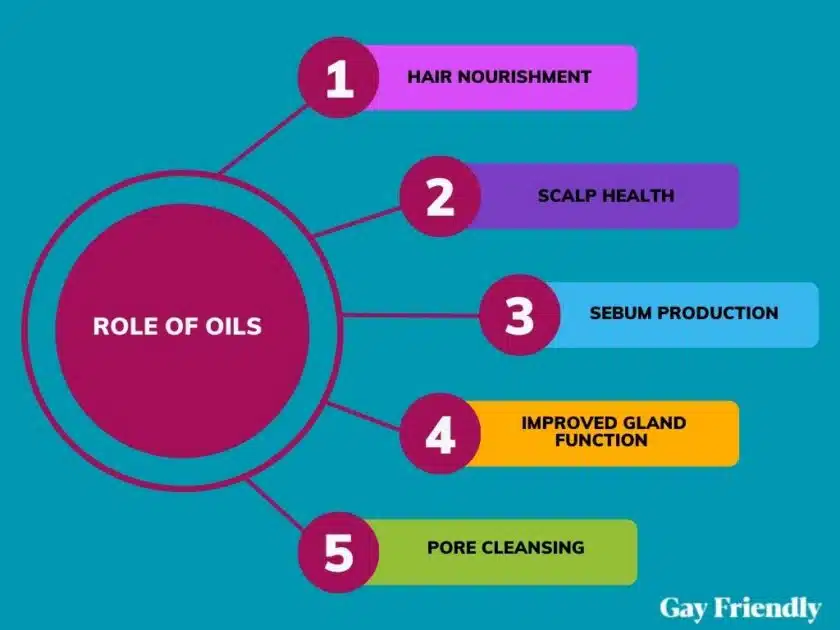
1. Hair Nourishment
Oils like sesame, sweet almond, and olive oil are rich in essential nutrients that nourish and strengthen the hair from root to tip. These oils penetrate the hair shaft, fortifying it from within and promoting healthier, stronger hair.
2. Scalp Health
Regular application and massage with these oils can help soften the scalp, thereby facilitating improved hair growth. The oil aids in providing the necessary hydration, reducing dryness, and promoting a healthier scalp environment conducive to hair growth.
3. Sebum Production
Essential oils can stimulate the production of sebum, a natural oil produced by our sebaceous glands. Enhanced sebum production conditions the hair, prevents dryness and imparts a natural shine.
4. Improved Gland Function
The gentle massage motions and warmth from the oil can improve sebaceous gland function, which can help in maintaining overall scalp health.
5. Pore Cleansing
Certain oils have natural antiseptic and anti-inflammatory properties that can assist in cleaning the pores on your scalp, preventing issues like dandruff and scalp acne.
How to Choose the Best Essential Oils
Consider the unique qualities and advantages of each essential oil before selecting one for a head massage. Due to their unique medicinal properties, bergamot, carrot seed, chamomile, frankincense, geranium, lavender, lemon, rose, rosemary, and tea tree are some of the preferred options. For instance, tea tree has antibacterial effects while lavender encourages relaxation and rosemary increases hair development.
Warning Regarding the Use of Essential Oils
Although there are many advantages to using essential oils in Indian Head Massage, it is important to use caution when doing so. These strong oils may easily permeate the skin and enter circulation because of the thin skin and lack of fatty tissue in the head, face, and neck regions. To guarantee the safe and successful use of essential oils in Indian head massage, keep the following in mind:
Dosage Control
Essential oils are highly concentrated substances, and even a small amount can have a significant impact. It is essential to use the appropriate dosage to prevent any potential adverse effects. Diluting the essential oil with carrier oil can help achieve the desired concentration and reduce the risk of skin irritation.
Client Health Assessment
Before selecting and applying essential oils, a thorough assessment of the client’s health condition is necessary. Certain individuals may have sensitivities, allergies, or pre-existing medical conditions that could be exacerbated by specific oils. Taking the time to understand any underlying health concerns will allow for the selection of oils that are safe and suitable for the client.
Personal Preferences
Each individual has unique preferences when it comes to scents and aromas. It is important to consider the client’s preferences and sensitivities to ensure a positive experience during the massage. Communicating with the client beforehand and discussing their scent preferences can help create a more enjoyable and personalized treatment.
Patch Testing
Before applying any essential oil directly to the skin, a patch test is recommended to check for any adverse reactions. Apply a small amount of diluted oil to a small area of the skin, such as the inner forearm, and observe for any signs of irritation or allergic reactions. If any negative reactions occur, it is best to avoid using that particular oil on the client.
Education and Expertise
The therapist should possess adequate knowledge and training in the use of essential oils. Understanding the properties, contraindications, and appropriate dilution ratios of each oil is vital. Ongoing education and staying updated with current research and guidelines will ensure the safe and effective application of essential oils.
By exercising caution and taking these important factors into consideration, therapists can harness the benefits of essential oils while prioritizing client safety and well-being during an Indian Head Massage session.
Recommended:
Massage Oils
The Perks of Indian Head Massage
Indian Head Massage, also known as shiroabhyanga, offers a wide range of benefits that contribute to overall well-being. This ancient practice goes beyond relaxation and encompasses a comprehensive approach to holistic wellness. By promoting hair growth, it increases oxygen supply to the hair follicles, revitalizing the health and vitality of the hair. The massage techniques employed in Indian Head Massage are effective in releasing built-up tension, thereby preventing headaches and migraines.
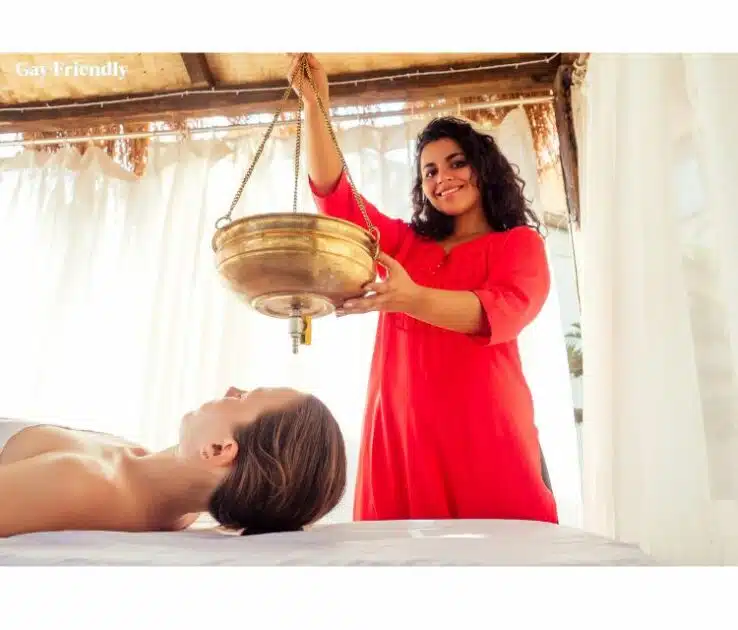
Working with the three higher chakras located in the throat, forehead, and crown of the head, the massage helps balance energy levels, fostering a sense of equilibrium and overall well-being. The calming and relaxing effects of Indian Head Massage provide relief from symptoms of depression and anxiety. By relieving stress and quieting the mind, it can boost memory capabilities and enhance cognitive function.
Furthermore, the stimulation of lymphatic drainage and improved circulation to the neck area promote detoxification and reduce swelling or inflammation. Indian Head Massage also aids in improving sleep quality by inducing relaxation and calming the nervous system.
Additionally, massage techniques support the circulation of cerebral spinal fluid, contributing to optimal brain function and neurological health. With its multifaceted benefits, Indian Head Massage serves as a pathway to achieving harmony, rejuvenation, and vitality for both the body and mind.
Recommended:
How To Do Manual Lymphatic Drainage?
The Bottom Line
Indian Head Massage, or shiroabhyanga, offers a holistic approach to wellness by addressing the interconnectedness of mind, body, and spirit. With its origins deeply rooted in Ayurveda, this traditional practice has gained popularity for its ability to release stagnant energy, promote relaxation, and provide a myriad of benefits.
From promoting hair growth and preventing headaches to balancing energy levels and relieving symptoms of depression and anxiety, Indian Head Massage encompasses a range of therapeutic advantages. By stimulating lymphatic drainage, improving sleep quality, and enhancing the circulation of cerebral spinal fluid, this ancient technique supports overall well-being on multiple levels. With its versatility and accessibility, Indian Head Massage has become a widely sought-after modality, offering a pathway to rejuvenation, harmony, and vitality.
Whether experienced in a spa, corporate setting, or personal space, Indian Head Massage has the power to provide a blissful escape and nourish the body and mind. Embrace the magic of Indian Head Massage and unlock its transformative potential for a truly holistic wellness experience.
FAQs
What is an Indian head massage good for?
It’s great for relieving stress, improving blood circulation, enhancing mental clarity, and soothing tension in the neck and shoulders.
Is Indian head massage good or bad for you?
It’s generally good for most people, providing relaxation and therapeutic benefits. Always consult a professional if you have specific health concerns.
What is the difference between Indian head massage and a normal head massage?
Indian head massage incorporates techniques from Ayurvedic tradition, focusing on specific pressure points and includes neck and shoulder massage. A normal head massage might not follow these traditions or target the same areas.
What is the Indian word for head massage?
In Hindi, it’s often referred to as “Champi” or “Champissage.”
Is Indian head massage spiritual?
Yes, it has spiritual aspects and is rooted in the ancient Indian healing system of Ayurveda. It aims to balance body, mind, and spirit.













